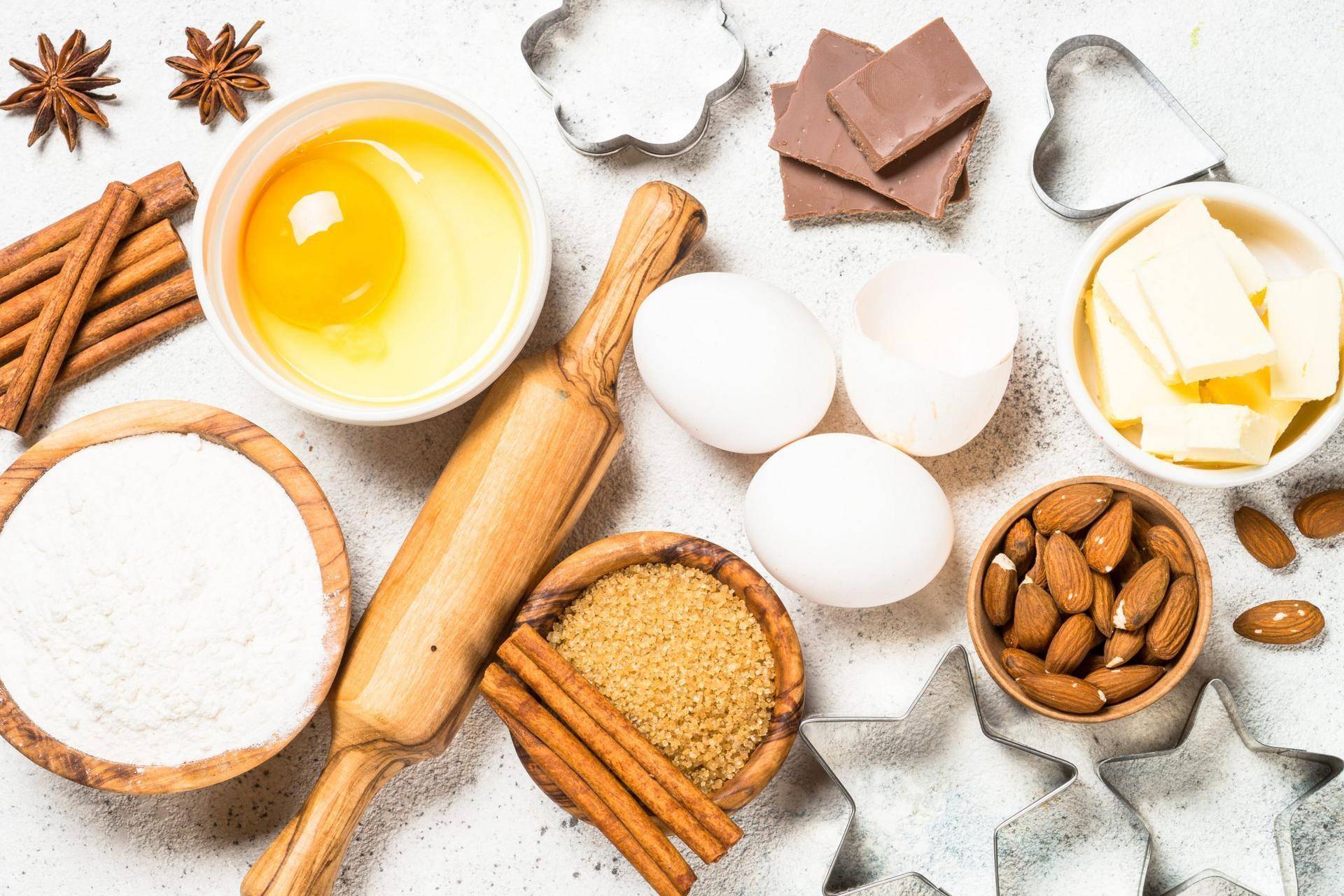By Kathleen Riggs
Though holiday baking is a few weeks away, now is a great time to take stock of and renew your baking supplies. This will ensure fresh, high-quality end products. Karin Allen, Utah State University Extension food quality specialist, provides insights on common baking ingredients, summarized below, by asking: What happens as the product ages? Can it still be used? How should it be stored?
It’s important to note that none of the ingredients listed below become harmful if eaten beyond their best-if-used-by dates, but freshness and taste will likely be compromised.
Flour: As flour ages, the starch changes very little. However, when the proteins that normally form gluten are exposed to air, they can change enough that it limits the amount of gluten that can be formed. Can it still be used? Yes, but it is best to use flour over a year old in products that don’t need a lot of formed gluten, including cakes and cookies. Use new flour for bread and chewy cookies.
To store flour, keep it in a tightly-sealed container away from heat and moisture. To prolong the shelf-life of whole wheat flour, store it in the freezer inside freezer bags. Otherwise, it will go rancid within six months.
Eggs: It isn’t easy to judge the freshness of eggs from the outside. Though the shells appear solid, they are actually very porous and allow moisture to escape. This is why old eggs float in water. Eggs may be used beyond the freshness date on the carton as long as they have been refrigerated. Older eggs can be used for making cookies but may require 1-2 teaspoons of water per egg, or the dough can be dry. Use only fresh eggs in cakes, cream puffs and meringue.
The American Egg Board cautions against storing eggs at room temperature, so refrigerate them until you use them. They can also be frozen. See instructions at: http://extension.usu.edu/foodstorage/files/uploads/how_old_is_too_old.pdf.
Fat: After containers are opened, fats, such as shortening or lard, and oils, such as canola or olive oil, are exposed to air and will turn rancid within a relatively short period – from a few days to a few months. Using fats after they have become rancid will affect the flavor and aroma of foods. Therefore, if the oil or fat gives an off odor, do not use it for baking or making icing.
Fats such as butter, shortening and oils do not need to be refrigerated or frozen, but they will last much longer if they are. Cooler temperatures slow the chemical reaction that causes rancidity.
Sugar: Granulated sugar does not change or go rancid, but it may occasionally develop an off-aroma that will not affect the flavor of baked goods. Soften brown sugar that has hardened by placing a slice of bread in a bag with the brown sugar, sealing it, then waiting up to 24 hours for the moisture in the bread to soften the brown sugar. For a faster method, soften it in the microwave oven. Crystalized honey can be heated in a pan of simmering water to melt the crystals.
Store sugar in an air-tight container away from moisture and insects. Sugar and honey do not need to be refrigerated or frozen to maintain quality or lengthen shelf-life.
Other common ingredients in holiday baked goods include baking powder, chocolate and chocolate chips, nuts, spices, extracts, and flavored oils. Chocolate may develop a white layer on the surface if storage temperatures are too warm, which can cause problems if you use it for dipping. The oil in nuts can cause them to go rancid quickly. Prevent this by freezing them for long-term storage. Spices lose potency over time, but adding more spice than is called for will help increase the strength. Extracts contain alcohol, making their flavor stable for long periods of time at room temperature.
To have the highest quality baked goods this holiday season, take stock of your baking supplies now. Fresh ingredients that are properly stored will help guarantee high-quality holiday foods.

